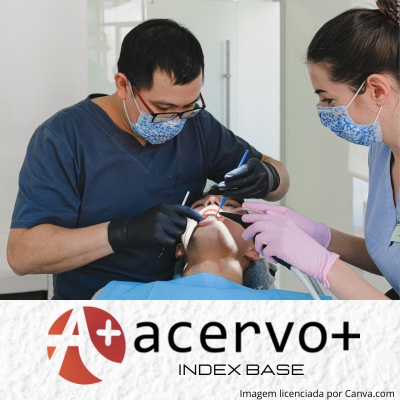Atendimento odontológico de emergência: um estudo transversal
##plugins.themes.bootstrap3.article.main##
Resumo
Objetivo: Investigar emergências odontológicas em adultos com 18 anos ou mais que buscaram atendimento não programado em Clínicas de Estágio de Emergência Odontológica da Faculdade de Odontologia da Universidade Federal de Juiz de Fora (FO-UFJF), analisando fatores demográficos, socioeconômicos e perfis de atendimento. Métodos: Foram entrevistados 250 pacientes ao longo de seis meses. Após o atendimento, os participantes responderam a um questionário estruturado com informações demográficas, socioeconômicas e odontológicas, incluindo motivos da consulta e necessidade de retorno. Foram realizadas análises descritivas e testes estatísticos (qui-quadrado de Pearson, exato de Fisher e teste de tendência linear) para avaliar associações entre variáveis. Resultados: A maioria dos pacientes (58%) eram mulheres, com idades entre 18 e 84 anos e baixa renda (menos de um salário-mínimo). As principais demandas envolveram procedimentos restauradores, protéticos ou endodônticos, especialmente entre pacientes em primeira visita (60,8%). Houve maior solicitação de próteses entre indivíduos com mais de 56 anos (p=0,05) e maior resolutividade em casos restauradores (p=0,013). Casos endodônticos frequentemente exigiram radiografias (p=0,017). Conclusão: Usuários eram majoritariamente mulheres com idade média de 50 anos e baixa condição socioeconômica. A maioria procurou o serviço pela primeira vez, com queixas resolvidas, na maioria das vezes, e necessidade de encaminhamento para continuidade do tratamento odontológico.
##plugins.themes.bootstrap3.article.details##
Copyright © | Todos os direitos reservados.
A revista detém os direitos autorais exclusivos de publicação deste artigo nos termos da lei 9610/98.
Reprodução parcial
É livre o uso de partes do texto, figuras e questionário do artigo, sendo obrigatória a citação dos autores e revista.
Reprodução total
É expressamente proibida, devendo ser autorizada pela revista.
Referências
2. ALBUQUERQUE YE, et al. Treatment profile at dental urgent care clinic for children and teenagers from Faculdade de Odontologia de Araraquara (FOAr)–UNESP. Revista de Odontologia da UNESP, 2016; 45: 115-120.
3. BAE JH, et al. Clinical characteristics of dental emergencies and prevalence of dental trauma at a university hospital emergency center in Korea. Dental Traumatology, 2011; 27(5): 374-378.
4. BALENOVIĆ A, et al. Sociodemographic Determinants and Common Reasons for Visiting the Emergency Dental Service in the City of Zagreb. ActaStomatologicaCroatica, 2019; 53(3): 247-254.
5. CURRIE CC, et al. Promoting regular dental attendance in problem-orientated dental attenders: A systematic review of potential interventions. Journal of Oral Rehabilitation, 2021; 48(10): 1183-1191.
6. CURRIE C, et al. Urgent dental care use in the North East and Cumbria: predicting repeat attendance. British Dental Journal, 2022; 232(3): 164-171.
7. FARMAKIS ET, et al. Emergency care provided in a Greek dental school and analysis of the patients' demographic characteristics: a prospective study. International Dental Journal, 2016; 66(5): 280-286.
8. FERRAZ DOS SANTOS B, DABBAGH B. A 10-year retrospective study of paediatric emergency department visits for dental conditions in Montreal, Canada. InternationalJournalofPaediatricDentistry, 2020; 30(6): 741-748.
9. FLUMIGNAN JDP, DE SAMPAIO NETO LF. Atendimento odontológico em unidades de emergência: caracterização da demanda. Revista Brasileira de Odontologia, 2015; 71(2): 124.
10. FRICHEMBRUDER K, et al. Dental emergency: Scoping review. PLoS One, 2020; 15(2): e0222248.
11. GALVÃO MHR, et al. Inequalities in the profile of using dental services in Brazil. Ciência&SaúdeColetiva, 2022; 27(6): 2437-2448.
12. GHANBARZADEGAN A, et al. The effect of education on dental service utilization patterns in different sectors: A multiple mediation analysis. Community Dentistry and Oral Epidemiology, 2023; 51(6): 1093-1099.
13. GUIVARC'H M, et al. A cross-sectional analysis of patient care pathways and profiles in a dental emergency department. International Dental Journal, 2020; 70(1): 21-28.
14. HAWSAWI HS, et al. Socioeconomic Determinants of Willingness to Pay for Emergency Public Dental Services in Saudi Arabia: A Contingent Valuation Approach. International Journal of Environmental Research and Public Health,2022; 19(22): 15205.
15. HUANG CL, et al. Analysis of adult dental emergencies at a medical center in southern Taiwan. Journal of Dental Sciences, 2022; 17(3): 1314-1320.
16. MATSUMOTO MS, et al. Determinants of Demand in the Public Dental Emergency Service. Journal of Contemporary Dental Practice, 2017; 18(2): 156-161.
17. MEYER B, et al. Determining the rate of follow-up after hospital emergency department visits for dental conditions. Clinical, Cosmetic and Investigational Dentistry, 2016; 8: 51-56.
18. OBADAN-UDOH E, et al.Testing dental quality measures: Emergency department visits for nontraumatic dental conditions and subsequent follow-up dental visits. Journal of the American Dental Association, 2023; 154(6): 507-518.
19. PEREIRA FAO, et al. Urgency and discontinuity of oral health care in children and adolescents. Ciência&SaúdeColetiva, 2020; 25(9): 3677-3684.
20. REBELO VIEIRA JM, et al.Contextual and individual determinants of non-utilization of dental services among Brazilian adults. Journal of Public Health Dentistry, 2019; 79(1): 60-70.
21. SPANEMBERG JC, et al. Quality of life related to oral health and its impact in adults. Journal of Stomatology, Oral and Maxillofacial Surgery, 2019; 120(3): 234-239.
22. TRAMINI P, et al. Factors associated with the use of emergency dental care facilities in a French public hospital. Special Care in Dentistry, 2010;30(2):66-71.
23. UNIVERSIDADE FEDERAL DE JUIZ DE FORA. Disponível em: https://www2.ufjf.br/odontologia/apresentacao/. Acesso em: 07 jul. 2024.
24. WORSLEY DJ, et al. Access to urgent dental care: a scoping review. Community Dental Health, 2017;34(1): 19-26.

